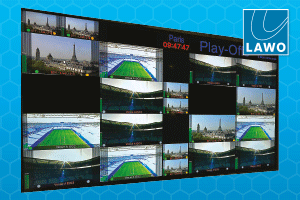Stereoscopic 3D, and colour grading are just two of the biggest things happening in post production at the moment. But its the little things, like the apps that many of us are furiously downloading to our mobiles or handheld devices that has got my attention. The things that are often accompanied by people expressing, wow, […]

Stereoscopic 3D, and colour grading are just two of the biggest things happening in post production at the moment. But its the little things, like the apps that many of us are furiously downloading to our mobiles or handheld devices that has got my attention.
The things that are often accompanied by people expressing, wow, thats cool! And when you look deeper into how some of these are now creeping into post applications and their utilities, and assisting not only in the workflow, but in the actual editing and finishing process, I cant help but start to believe the science fiction of yesterday is becoming the reality of today.
Used daily, on the go, for business, entertainment, lifestyle and even GPS; apps, using intelligent algorithms, are turning us all into slaves to a technologically-dominated way of life. Whilst taking my seat on a plane recently, I placed my iPad on my knee and the person next to me said, aha, so youre an Apple junky too!
Yes I am, I admitted, and if anything gives more time to the creation process by taking away the boring chores from the workflow, I say bring it on.
So what happened to being prudent with your film stock and planning your shoot so meticulously to avoid escalating costs, particularly in post? Now, alongside quality, its all about quantity, and more choice. You hear it often Keep that camera rolling, digital storage is cheap these days; never mind the poor person back at base that has to play through hours of footage and log sheets, if indeed, you are lucky enough to have someone on location to log them.
But even thats now a thing of the past with intelligent apps such as those that process image or audio recognition. Available applications for on-location logging provide the means to create accurate logs and metadata thatll instantly locate shots and clips associated with the storyboard, script or brief with just a click of a mouse. And its not far off that these apps will eventually appear on tablet computers like an iPad, and the director will be able to review the shot along with all its info as it takes place, and from anywhere on set.
And now, there is software currently being developed along with available Beta versions that can analyse facial expressions to measure emotional responses. The implications are huge when you consider, for example, the growing necessity for generating detailed metadata for on-location shoots or supporting expanding archives and tapeless libraries.
When applied to marketing, it can provide the ability to measure a persons reaction thatll serve to drive more effective campaigns and even potentially improve designs. Itll become possible for movie studios to gauge audience responses with a scene by scene granularity that the current survey and questionnaire approach cannot achieve.
A director may learn that whereas the audience enjoyed the movie overall, there were scenes that didnt quite create the desired impact or a particular character that did not inspire an intended emotional response. Therefore, if the software can detect emotional responses in the audience then it must be able to detect emotional performances which can then help to drive better shot selection for an edit. Now; as a seasoned editor myself, I would never presume to suggest that thisll replace the art of editing; but rather, to use the softwares suggested clips to aid and heighten the viewers emotional experience.
Adobe already uses face detection technology to locate clips with human faces, and other smart algorithms, for example, the Roto Brush tool in After EffectsCS5. Adobe Story, a relatively new Live online service that can synchronise scripts to footage using voice recognition is an intelligent way that makes it possible to link lines in a script with in and out markers to find specific clips, or you can even go further to form rough cuts, combined with Adobe On Location and these are seriously powerful apps.
They take away some of the repetitive chores in post production, giving more time for the creative. But where do we draw the line? For it may come to pass, that sometime soon in the future, well look back and wonder when exactly the machines took over!
Keith Dallison is post production manager at MBC.














































































